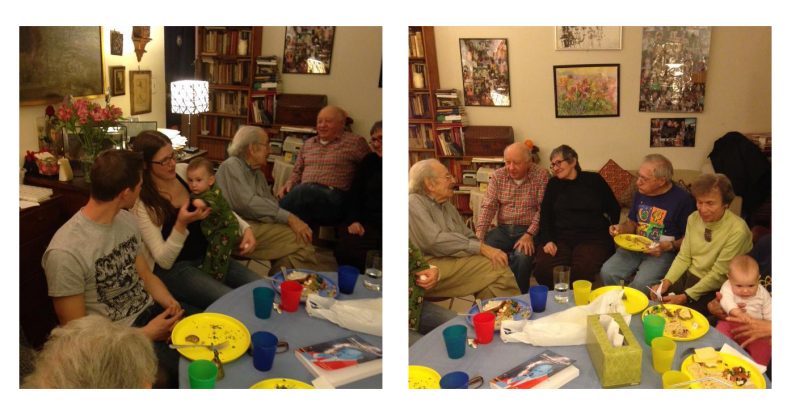By Michael Simonson, Head of Public Outreach and Archivist at Leo Baeck Institute
A recent Tablet Magazine article, “Holocaust Survivors Continue Gathering – Online,” reported on the Stammtisch, a weekly gathering in NYC, moving to Zoom in the wake of COVID-19. Michael Simonson, of the Leo Baeck Institute, tells about his experiences attending the Stammtisch pre-COVID 19 and now.
I’ve been going to the Stammtisch, off and on, since 2003. Since I’m not a native German speaker, I go in part to help hone my language skills since only German is spoken. It’s a weekly event, every Wednesday, held at the same host’s home (before COVID-19). Meetings used to start at 6 or even later, and people would stay until 10 or 11. Now that we meet virtually it starts at 4 PM and lasts an hour or two. Most people drop in for about 15 minutes to say hello, but others stay on for an hour or maybe a little longer.

The Stammtisch founders were German and Austrian Jewish intellectuals and artists who had a shared experience of immigrating to the United States. They wanted to speak their native language and spend time with others from a Jewish culture that is unique to Germany and Austria.
These days, many of the people who attend aren’t necessarily Jewish, but they work in the area of Jewish history. There are a lot of academics and historians, or younger people: some Gedenkdiener, some who are interning at places like the Museum of Jewish Heritage – A Living Memorial to the Holocaust and the Leo Baeck Institute. Some of them work at the United Nations. It’s a nice place to go to connect with other historians of Jewish studies, a large number who are from Germany and Austria, as well. And then there are people like the Holocaust survivors who were interviewed in the Tablet article – they’ve been part of the Stammtisch for decades and have become friends over the years, so it’s a social community as well.
From my perspective, the Stammtisch has evolved into being a bridge between different generations of native German speakers who share an interest in the culture of German and Austrian Jews. I think the older members really enjoy getting to know the younger attendees, some of whom will only be in the US for a short time, others who are here for longer or who have immigrated. There is a connection that language and culture gives people, even across generations.